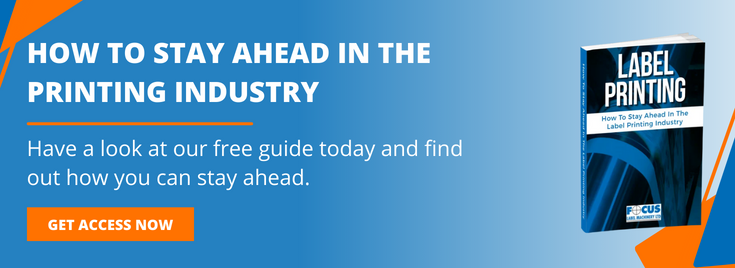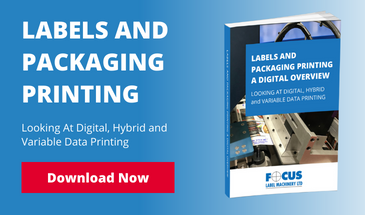
Most printing businesses are keen to reduce label printing costs. A quick way to do this is to cut corners by reducing label size, Using an alternative substrate, offer cheaper alternative Inks. However, there is only so much you can do to cut costs & it doesn’t make good business sense for most companies to adopt this approach, as customers will simply go elsewhere if their needs are not met.
Instead, to save costs you need to look at your present production practices and the technologies you use.
Here are three ways you can start developing an investment strategy to reduce your printing costs.
1) Choose The Appropriate Technology For Your Printing Demands
A printing press should comfortably accommodate your production requirements with room for manoeuvre should they increase or decrease. Using a printing press with a wider web width greater than your production requirements will waste much of its capacity.
On the other hand, if you invest in a machine with a very narrow web , but keep printing large quantities of labels, your machine will need to work far harder than it needs to, making the risk of more significant repairs over a shorter period. It will also require a greater number of changeovers, reducing your production speed & capacity.
Always make sure that you work out your average printing output over the past few years and plot your growth trajectory on a chart that incorporates your likely output for the next 3 to 5 years. Take into account any likely changes, such as taking on a large new customer. Then look at a printing press that offers the most cost-effective output to accommodate your required workload. If you have the space and the budget, and are unsure of your output, you may want to invest in multiple machines to spread the load. This allows flexibility and reduces maintenance costs by cutting back on wear and tear, but the larger investment will mean it takes you longer to achieve a positive ROI.
2) Energy Efficiency
Consider ways in which you can reduce your energy expenditure on each print run. Modern machines are important, since they offer a greater energy efficiency level than previous models. Automation is a key feature of the latest Flexo machine designs coming to market. Hybrid and digital printers can quickly switch between a working mode and sleep mode, reducing idle energy expenditure and conserving energy between print cycles.
3) Consider The Benefits Of Digital Printing
Traditional Flexo printing is still the most cost-effective option for medium to large print runs. However, it does involve preparing printing plates and setting up print cylinders for each label design thus making changeover a lengthy process. Flexographic printing is not responsive to last-minute changes or diverse requirements within a single print run – and small errors can result in a lot of wastage. Digital printing is easier to set up and allows you to change in a dynamic business environment. Adopting one or more digital printing presses may help you save money across your production line if a significant part of your work comes from short print runs. The ability to take on more orders will offset the significant higher print cost per label, while short changeovers will save you a lot of valuable time.
If your work includes a balance of shorter and longer print runs, you may want to consider a hybrid solution – a digital press that includes flexographic modules that make it more cost-effective for large volume runs.
Download Our Free E-Book
For more advice on reducing label printing costs and making smart capital investment decisions, please take a look at our free e-book: How To Stay Ahead In The Label Printing Industry. Click here to download your copy.







